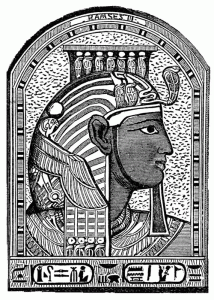 In my last article on the race of Ramesses III, I had went over my theory as to what race this Pharaoh may have been. In this article I would like to present the clues and facts that I have found in my research.
In my last article on the race of Ramesses III, I had went over my theory as to what race this Pharaoh may have been. In this article I would like to present the clues and facts that I have found in my research.
The first fact that I would like to point out is that Ramesses III’s father, Setnakhte (or Setnakht) was not the same race of some or all of the previous Pharaohs. Setnakhte or Set was the first Pharaoh (1189 BC–1186 BC) of the Twentieth Dynasty of the New Kingdom of Ancient Egypt ,and it is widely known that Setnakhte was not the son, brother or a direct descendant of the previous 2 pharaohs: either Twosret or Merneptah Siptah, nor that of Siptah’s predecessor Seti II, whom Setnakht formally considered the last legitimate ruler.
So, if Setnakhte is not a direct descendant of the previous two Pharaohs, then this also means that Ramesses III is not a direct descendant to them as well. In addition, Setnakhte or Set was the first Pharaoh (1189 BC–1186 BC) of the Twentieth Dynasty of the New Kingdom of Ancient Egypt ;which means a “new dynasty” was in place, and this was because it was “new blood” on the throne which is signified with the new 20th dynasty.
The union of blood would have obviously of happened shortly after the time that the Egyptian–Hittite peace treaty was signed. This was a peace treaty concluded between Egyptian Pharaoh Ramesses II and Hittite King Hattusili III, that the Egyptians and Hittites made pledges of brotherhood and peace as seen in the first line of the treaty, “Ramesses, Beloved of Amon, Great King, King of Egypt, hero, concluded on a tablet of silver with Hattušiliš, Great King, King of Hatti, his brother” and later in the tablet saying, “Ramesses II agreed to provide support to Hattušiliš’ successors in order to hold the Hittite throne.”
As I stated in my last article, the key phrase here in understanding the race of Ramesses III is this, “Ramesses II agreed to provide support to Hattušiliš’ successors in order to hold the Hittite throne.” Therefor, we now have in writing Ramesses II guaranteeing to provide support to Hattušiliš’ successors in order to hold the Hittite throne. Obviously this wouldn’t take to well with the Egyptians and both Ramesses II, and Hattušiliš’ knew this simple fact. This was when the plan was hatched by these two kings to try and conceal Ramesses II and Hattušiliš’ successors who would eventually take the throne in Egypt in the mixed blood union of Ramesses III, who was not only of Egyptian blood, but also Hittite blood. This making him one of the most important Pharaohs of all time.
In addition to the above major details, we now have the science to back our facts up with his DNA, which states Ramesses III belongs to the E1b1b Y-DNA haplogroup.
So thus far in only a few short paragraphs we have 5 HUGE facts to place as DNA evidence to what race Ramesses III actually was. These facts are:
- The Egyptian–Hittite peace treaty between Egyptian Pharaoh Ramesses II and Hittite King Hattusili III
- Ramesses II agreed to provide support to Hattušiliš’ successors in order to hold the Hittite throne.
- Ramesses III’s father, Setnakhte (or Setnakht) was not the same race of some or all of the previous Pharaohs
- Setnakhte or Set was the first Pharaoh (1189 BC–1186 BC) of the Twentieth Dynasty of the New Kingdom
- Ramesses III belongs to the E1b1b Y-DNA haplogroup.
I also belong to this same YDNA Haplogroup and my DNA certificate says that I AM Phoenician. Also, my research into this E1b1b Y-DNA haplogroup has shown me that this was also the Hittites same DNA, or very similar. Now, this would be fact #6 to add to the above list, that if I AM considered Phoenician based on my DNA, then that would also make Ramesses Phoenician. This same DNA is found in high percentage of people of Jewish decent and also Ethiopian Jews which further ties Ramesses III to the Israelites.
To finish this article I would like to point out fact #7 ,which would be the clothing of Ramesses III. In particular the images below with his sandals with upturned toes that you will not find on any other earlier Pharaohs. These sandals with upturned toes were ONLY worn by one peoples at the time and they certainly were not Egyptians or Cush who wore them, but only the Hittites which anyone can clearly see from ancient literature and hieroglyphs that detail these sandals with upturned toes.
The image below shows a Hittite bas relief with the same sandals.
In Matt. 7:26, of course, … B.C.) portrays JEHU and the Israelites having shoes with upturned toes, while the Assyrians to whom they were paying tribute were wearing sandals with heel caps.
Here is another image of the Hittite priest in the same exact position as Ramesses III above with his right hand raised, left down and with the same sandals with upturned toes.
This concludes Part II on my series on the race of Ramesses III. In my next article, I will provide the final facts that will place a light on the truth once and for all if these last two articles have not already done so.
FIAT LUX
Related articles

Moe is the founder of GnosticWarrior.com. He is a father, husband, author, martial arts black belt, and an expert in Gnosticism, the occult, and esotericism.

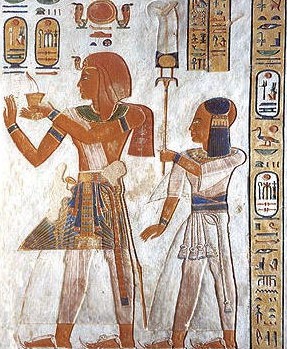
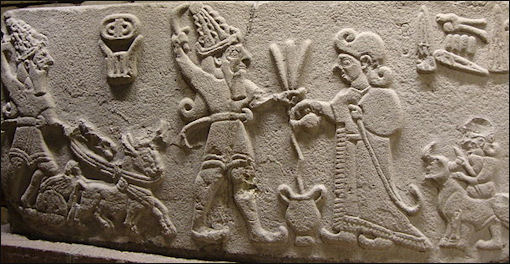
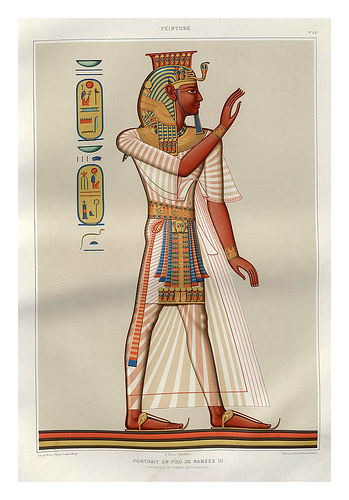
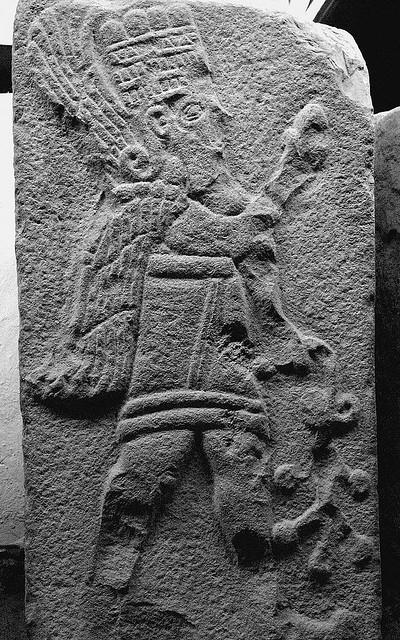




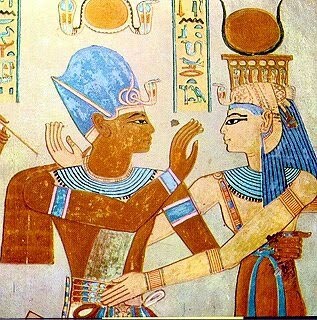
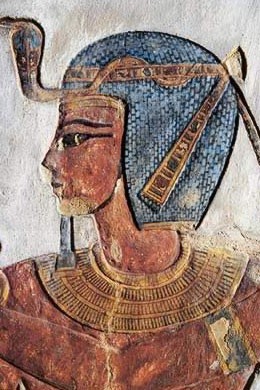

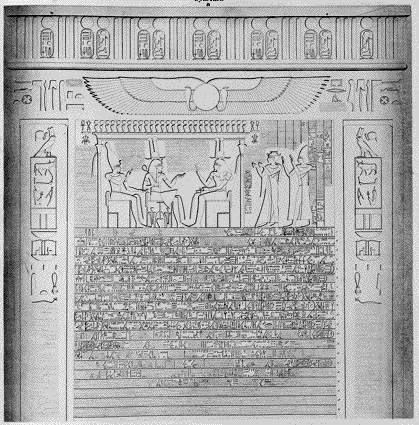


I agree that the varous subclades of E must be the branches of a single trunk. The idea of “races” is passee and now we speak of populations. Also, since haplogroups represent ancestors living in the very distant past who can have migrated far from the area of the origin of the group, ones haplotype, whether of the Y or mitochondrail variety, need have no reflection on ones appearance or where ones family has resided for the last few centuries.
Ramesses III looked like a Caucasian male in all of his portraits and, in the Great Harris Papyrus, he and the gods accompanying him all had their skin painted pure white. This, in itself, is unusual because the skin of Egyptian males was normally painted a reddish-brown color and that of the females light yellow. However, even as early as the time of the late 18th Dynasty, the skin of some of the women began to be shown as pink. The famous bust of Queen Nefertiti has pink skin and some beautiful women in the not-very-distant reign of Horemheb are depicted with the same color. Ditto for Queen Nefertari, wife of Ramesses II, in her tomb. This indicates to me an acknowledgment that the color canon of Egyptian art, in place since the Old Kingdom, no longer necessarily reflected the mixed population of thr Egypt of the New Kingdom. The mummy of Ramesses III has a shaved head but the anonymous mummy of a young male, proved by DNA to be his son, has braided light blond hair. None of this, however, argues against their very distant forefather having had predicted E1b1a and living in sub-Saharab regions. It takes only a few generations of inter-mixing with a diffrent population for a descendant to resemble that population instead of the ancestor from a different-appearing group of people. This is what happened in the case of Francis Barber, a black manservant of Samuel Johnson, who was brought to England from Jamaica. In the early part of the 19th Century, Barber married a white woman. The Barber family of today are white persons but the males will still have the same y-DNA as Francus Barber.
E1b1b is much more common in modern Egypt but E1b1a is not difficult to accept under these circumstance, either. It is not possible to know who Setnakht, the founder of the 20th Dynasty to which Ramesses III belonged, was. However, the “shoe theory” is not very compelling, especially since the Egyptian were portrayed wearing sandals and the Hittites with boots. Pointy toes on footwear can be seen in various lands throughout the ages, some very extreme. The point was [no pun intended] that the longer the tip of the shoe the greater the status of the wearer. People who did manual labor never wore such footwear.
My brother also did 23 and me and me DNA test. His results also stated that he was a direct decedent of Ramesses III from our paternal lineage. Also, only 1 in 1800 share this DNA thru the Y Chromosome. My question is how is this possible and are these DNA test reliable?
I also am from Ramses III bloodline. Really cool thing to know.
I recently found out through a DNA test that Ian a descendant of Rameses. I would love access to part 3 if possible. All other links are not working.
I also descend from Ramesses bloodline through my Father who was a Black man, my brother did the test.
Skip to main content
HOME
ANCESTRY
HEALTH & TRAITS
RESEARCH
FAMILY & FRIENDS
Ancestry
Print-print
Paternal Haplogroup
You descend from a long line of men that can be traced back to eastern Africa over 275,000 years ago. These are the men of your paternal line, and your paternal haplogroup sheds light on their story.
Summary Scientific Details
Eddie Dee, your paternal haplogroup is E-M4254.
As our ancestors ventured out of eastern Africa, they branched off in diverse groups that crossed and recrossed the globe over tens of thousands of years. Some of their migrations can be traced through haplogroups, families of lineages that descend from a common ancestor. Your paternal haplogroup can reveal the path followed by the men of your paternal line.
Migrations of Your Paternal Line
A
275,000 Years Ago
DE-M145
76,000 Years Ago
E-M96
73,000 Years Ago
Haplogroup A 275,000 Years Ago
The stories of all of our paternal lines can be traced back over 275,000 years to just one man: the common ancestor of haplogroup A. Current evidence suggests he was one of thousands of men who lived in eastern Africa at the time. However, while his male-line descendants passed down their Y chromosomes generation after generation, the lineages from the other men died out. Over time his lineage alone gave rise to all other haplogroups that exist today.
E-M180
17,000
Years Ago
Origin and Migrations of Haplogroup E-M180
Your paternal line stems from the E-M180 branch of E, which dominates south of the Sahara. The haplogroup originated about 17,000 years ago in the pockets of western Africa that were habitable at the time, when much of the continent was extremely dry due to Ice Age climate conditions.Over ten thousand years later, men bearing haplogroup E-M180 migrated throughout sub-Saharan Africa, spurred by the development of agriculture and iron-working in the region.
E-M180 is most common today among speakers of Bantu languages and those related to them; it reaches levels of up to 90% among the the Mandinka and Yoruba of western Africa, where the migrations began. Farther from their origin, E-M180 reaches frequencies of 50% or higher in the Hutu, Sukuma, Herero, and !Xhosa. The lineage is also the most common haplogroup among African-American male individuals. About 60% of African-American men fall into this haplogroup primarily due to the Atlantic slave trade, which drew individuals from western Africa and Mozambique, where E-M180 accounts for the majority of men.
E-M4254
12,000
Years Ago
Your paternal haplogroup, E-M4254, traces back to a man who lived approximately 12,000 years ago.
That’s nearly 480.0 generations ago! What happened between then and now? As researchers and citizen scientists discover more about your haplogroup, new details may be added to the story of your paternal line.
E-M4254
Today
E-M4254 is relatively common among 23andMe customers.
Today, you share your haplogroup with all the men who are paternal-line descendants of the common ancestor of E-M4254, including other 23andMe customers.
1 in 210
23andMe customers share your haplogroup assignment.
You share an ancient paternal lineage with Pharaoh Ramesses III.
E-V38
Pharaoh Ramesses III defended Egypt in three consecutive wars during his approximately 30-year reign, but provoked dissent within his administration. Catalyzed by mounting internal strife, one of Ramesses’s lesser wives, Tiye, hatched a plot to have her son, Pentawer, usurp the throne by having Ramesses III murdered along with his appointed heir. A papyrus record of the resulting trial explains that the plot failed and that all involved were tried and convicted.
However, a modern CT scan of Ramesses III’s mummy revealed a deep slit in his throat, reopening a case long thought closed. The embalmers went to great lengths to cover up other wounds, including fashioning a fake toe out of resin where Ramesses’s real one had been hacked off, likely during a fatal attack. For thousands of years, Ramesses’s burial adornments concealed the wounds that mark one of the most famous royal dramas in history. Ramesses III’s paternal lineage belongs to haplogroup E-V38, from which your line also stems. You and Ramesses III share an ancient paternal-line ancestor who probably lived in north Africa or western Asia. My ancient Great-grandfather was Black
My updated 23andme report states that I share an ancient paternal lineage with Pharaoh Ramesses III E-V38.
But that doesn’t mean you are a direct descendant of the pharaoh–even though many men who got the same report evidently believe it is so. If it is really true that the haplotype of Ramesses III was E1b1a [and not E1b1b] there were many contemporaries with the same y-type. It goes back many more thousands of years than the king, who lived about 1200 BCE or less. Tutankhamun, another Egyptian pharaoh, was confirmed to have R1b, the y-haplotype of Dynasty 18, presumably. Very many men carry R1b but they can’t be a descendant of Tut because he had no living sons to succeed him. With him died the 18th Dynasty.
In this article you stated:
“In Matt. 7:26, of course, … B.C.) portrays JEHU and the Israelites having shoes with upturned toes, while the Assyrians to whom they were paying tribute were wearing sandals with heel caps.”
The bible verse does not match the description. Could you clarify. Thanks
I am African American an share the same paternal halo group with Ramesses iii
Well, 23 &Me said that I am also linked to Ramesses 111 lineage but my Halprogroup DNA code is different: EM-154.
According to them, he and I were on the same paternal line which hails from Eastern Africa.
Can someone explain this?
Everette
Think of DNA like a tree with each respective branch being a tribe or race and from this same older branch, other newer branches form. The tree is the father or Adam or in this case Ramesses III and the branches depending on how high and old are of the Sons of the Father who mold themselves after the Father and in turn have sons who mold themselves and so on and so on ad Infinitum.
“Think of DNA like a tree with each respective branch being a tribe or race and from this same older branch, other newer branches form.”
Male Y-DNA does not work as you described…both male and female DNA are paternally inherited and sexually specific therefore each branch of descendant male or female dna is a tribe of the tree but not a separate race. Example: If the race of the tree is Apple then every branch on the tree is going to produce apples not an orange on 1 branch , grapes on another etc…(thus the 12 tribes of Israel can never be twelve different Y-DNA haplogroups because in order to be a haplogroup you can only have one father and one mother at the root= 1 tree/father/race that produces only one kind of fruit/children and not 1 tree producing 12 different kinds of fruit/children).
In the case of Israel all the sons of Esau would share his same Y-DNA as in the case of Jacob, so if Esau had 10 sons the Dukes of Edom then he and all of his descendants would share Esau’s Y-DNA of E1b1b because the Ashkenazi/Sephardi/Mizrahi jews all Identify Esau as their Patriarch then we also know that Jacob’s Y-DNA must be E1b1a and so must all his children the 12 tribes who are the Ephraimites also the 14 Sons Israel including the two sons of Joseph who would still also be E1b1a like their father. So being in a specific haplogroup means that all the members of the haplogroup come from the same father and mother root and are of one race and the same kind of fruit on the tree=E1b1a like their grandfather.
“The tree is the father or Adam or in this case Ramesses III and the branches depending on how high and old are of the Sons of the Father who mold themselves after the Father and in turn have sons who mold themselves and so on and so on ad Infinitum.” You are forgetting that RAMESSES III is a branch of an existing haplogroup tree= Y-DNA “E” not a new haplogroup tree like “F” the next in line so as expected all of RAMESSES III’s descendants would also be apples/the same race as their father, all of his children would be also E1b1a/E3a as also was his father.
in regards to your hypothesis of a Ramesses III being a different race, E1b1b is still the same Race/Haplogroup so they were still the same race but like all family trees there are separate families involved and the relationship of Senatke and Ramses III is two separate families from the same family tree. We do have confirmation however that Ramesses III was E1b1a there was another mummy found who was a Y-DNA match and 50% genetic match to Ramesses mummy…this result can only be obtained by a full blood son/Pentawaret…
Possible relationship with his son Pentawaret
The Zink unit determined that the mummy of an unknown man buried with Ramesses was, because of the proven genetic relationship and a mummification process that suggested punishment, a good candidate for the pharaoh’s son, Pentaweret, who was the only son to revolt against his father. It was impossible to determine his cause of death. Both mummies were predicted by the STR-predictor to share the Y chromosomal haplogroup E1b1a1-M2 and 50% of their genetic material, which pointed to a father-son relationship.[23]
I believe the people of the E Haplogroup who were are among the Jews and Samaritans are the Pater-Lineal descendants of the Egyptians who converted at the time of the Exodus and joined in the first Passover. It was probably these same people who Jeroboam made his Priests.
It’s the 19th Dynasty that was probably not native Egyptians, dues to Ramses II’s Red Hair.
According to a genetic study in December 2012, Ramesses III belonged to Y-DNA haplogroup E1b1a, a YDNA haplogroup mainly found in Sub-Saharan Africa with a possible source of origin in East Africa.[26]
Please provide the dys markers of the E1b1b Ydna strand. A good interpretation of Ydna can only be pursued with the dys markers included.